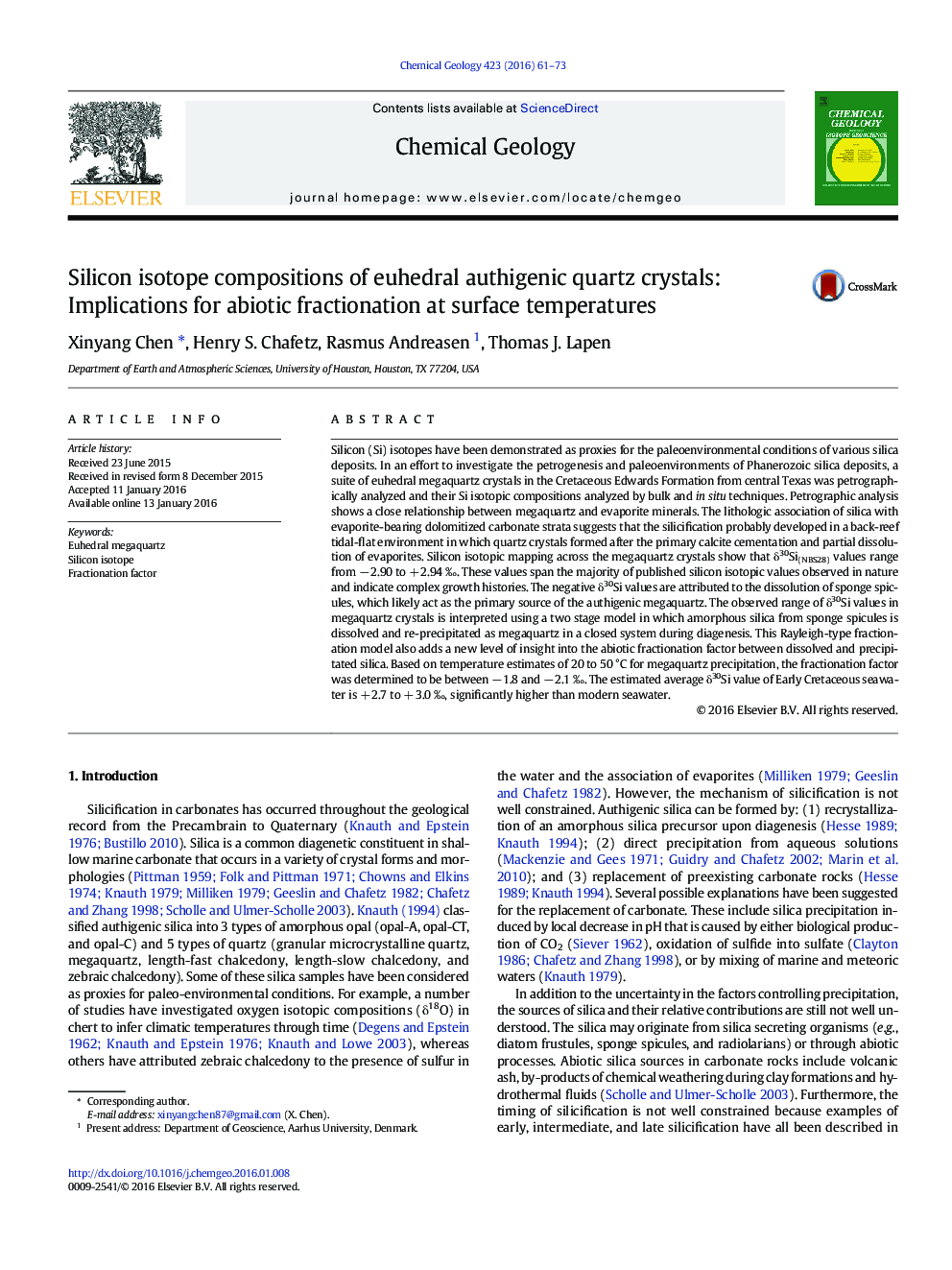| کد مقاله | کد نشریه | سال انتشار | مقاله انگلیسی | نسخه تمام متن |
|---|---|---|---|---|
| 4698320 | 1637551 | 2016 | 13 صفحه PDF | دانلود رایگان |
• δ30Si values of megaquartz crystals in the Cretaceous Edwards Formation were measured by bulk and in situ techniques.
• A two-stage Rayleigh-type fractionation model was proposed to explain the quartz formation and observed Si isotope range.
• Si isotope abiotic fractionation factor at surface temperature was constrained.
• Early Cretaceous seawater Si isotopic composition was estimated.
Silicon (Si) isotopes have been demonstrated as proxies for the paleoenvironmental conditions of various silica deposits. In an effort to investigate the petrogenesis and paleoenvironments of Phanerozoic silica deposits, a suite of euhedral megaquartz crystals in the Cretaceous Edwards Formation from central Texas was petrographically analyzed and their Si isotopic compositions analyzed by bulk and in situ techniques. Petrographic analysis shows a close relationship between megaquartz and evaporite minerals. The lithologic association of silica with evaporite-bearing dolomitized carbonate strata suggests that the silicification probably developed in a back-reef tidal-flat environment in which quartz crystals formed after the primary calcite cementation and partial dissolution of evaporites. Silicon isotopic mapping across the megaquartz crystals show that δ30Si(NBS28) values range from − 2.90 to + 2.94 ‰. These values span the majority of published silicon isotopic values observed in nature and indicate complex growth histories. The negative δ30Si values are attributed to the dissolution of sponge spicules, which likely act as the primary source of the authigenic megaquartz. The observed range of δ30Si values in megaquartz crystals is interpreted using a two stage model in which amorphous silica from sponge spicules is dissolved and re-precipitated as megaquartz in a closed system during diagenesis. This Rayleigh-type fractionation model also adds a new level of insight into the abiotic fractionation factor between dissolved and precipitated silica. Based on temperature estimates of 20 to 50 °C for megaquartz precipitation, the fractionation factor was determined to be between − 1.8 and − 2.1 ‰. The estimated average δ30Si value of Early Cretaceous seawater is + 2.7 to + 3.0 ‰, significantly higher than modern seawater.
Journal: Chemical Geology - Volume 423, 20 March 2016, Pages 61–73
